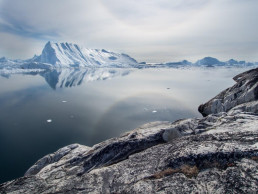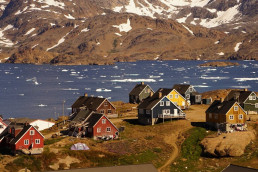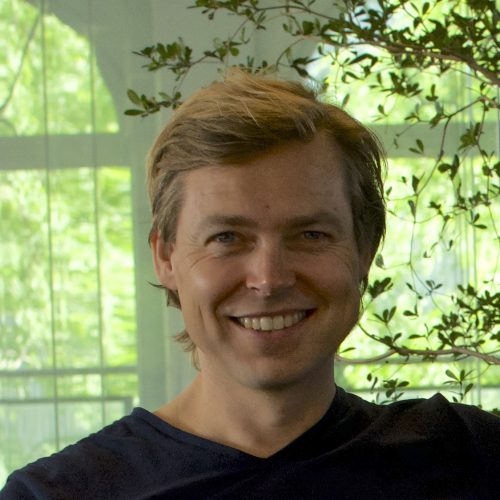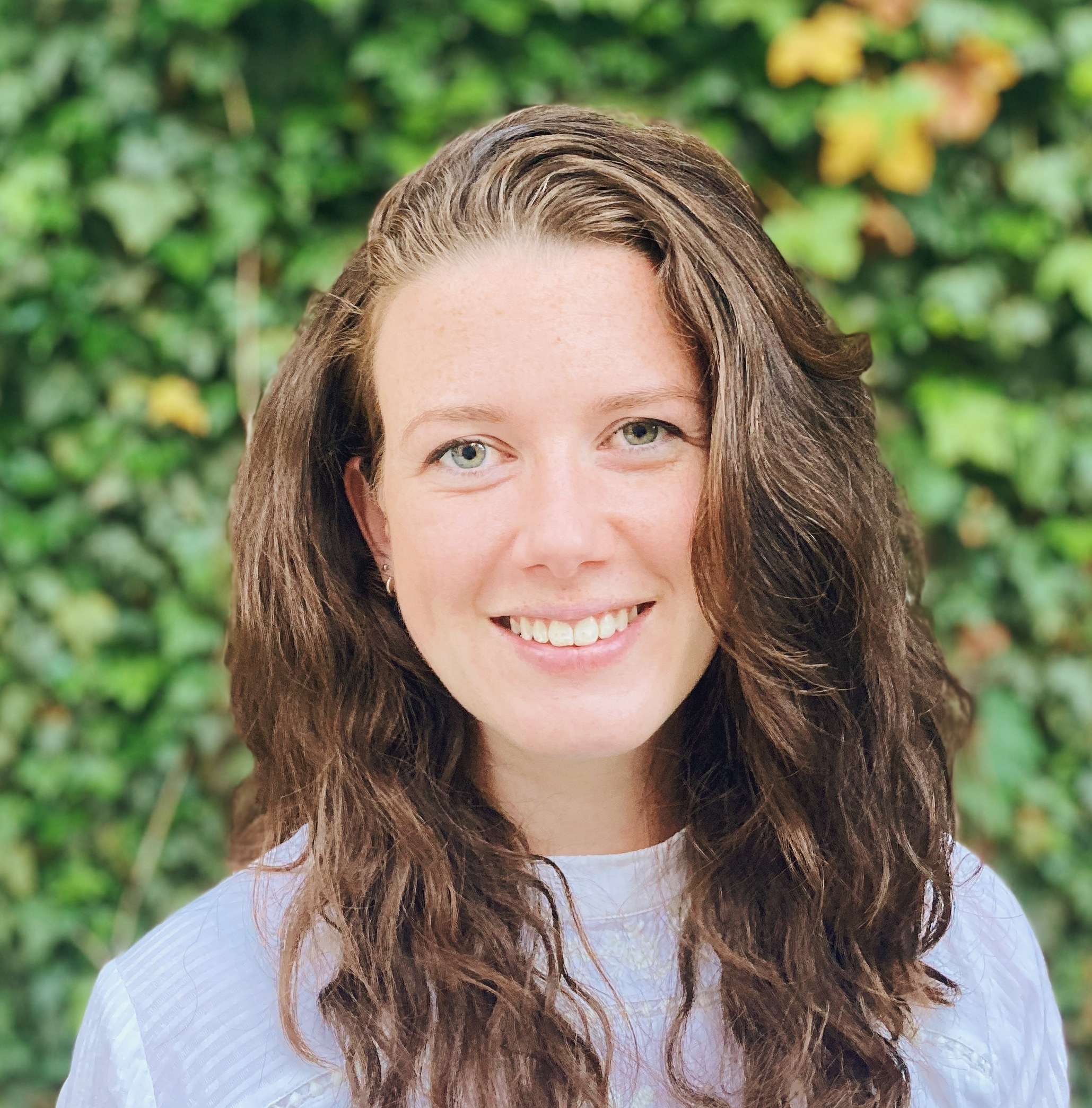Interview with Sustainia CEO Rasmus Schjødt Larsen
Arctic Business, Sustainability, and Innovation
Sustainia CEO Rasmus Schjødt Larsen shares his thoughts on interesting trends in the sustainability space and key challenges and opportunities in achieving the SDGs. With the annual Arctic Opportunity Explorer competition coming to an end, he shares some of the most interesting solutions that came as a result of students' collaborations.
You work at the intersections of sustainability and business – could you share a bit about what has driven and inspired you along the way, and shaped your journey? What are the core values, philosophies and ideas that motivate and inspire your work?
Sustainability is trending all over the place right now, and everybody wants to come up with answers. So, my journey with sustainability started well before I joined Sustainia as the CEO. Working with sustainability has been a part of my thinking ever since university. I went to Harvard University and at that time social innovation was a big thing. And you recognized some of those same elements now as you see environmental, social and governance issues that are also being implemented within large organizations.
Social innovation was kind of an answer to some of the things that you do not cover when you’re pursuing positive financial returns. And whilst we are all familiar with the financial side of a business and how we account for value, the non-financial issues of business are profoundly important to society. So I started studying them back then at Harvard and at MIT and have continued to work with those areas up to today.
What are some of the most promising trends and innovations you see emerging at these intersections of sustainability and business innovation?
I think there’s been a movement from just talking about sustainability and creating awareness, to taking concrete action. As for creating awareness, that’s also something that has been happening for many years – pointing toward the actual real solutions that are out there. Some of them are already scalable. Others need investors in order to grow. But there are definitely a number of technological solutions to nearly every challenge that we as a humankind faces. And now I see that there is this huge, vast and growing momentum around taking action and getting things done right.
So all of the traditional business disciplines are leaning towards now putting sustainability front and center, and a lot of companies and organizations are challenged by how to do that effectively. But I think there is a growing consensus – at in least some parts of the world – that putting sustainability front and center is what we need to do. And I think that that general awareness has spread from boardrooms and CEOs and visionaries to a lot of professionals working every day just to do their job. But now they also want to do it at the most sustainable fashion. I think that’s very positive.

The program focused on gender and health?
Arctic Opportunity Explorers is made possible through a grant from the Nordic Council of Ministers – and they wanted us to focus on gender equality in the Arctic and the well-being of youth and kids. We’ve done it three years in a row now, and I think it’s wonderful to see the variety of answers to questions that are not necessarily clear cut and see the solutions that come out from these. These are collaborations developed by young university graduates from around 21 universities. It’s actually it’s very inspiring and it brings hope because it’s everything from business development to mental health and new opportunities for women and men.
So I’d like to highlight a couple of projects that came out. One was a project about digitizing Artic art through NFTs – nonfungible tokens. And so those are appreciating in value, and they’re run by blockchain that verifies it, a digital asset. So if you’re creating an artwork, you can certify in the blockchain that this was actually the original piece of art. And this is creating a new marketplace, and recently at auctions double digit million-dollar pieces of digital art have been sold. And that’s something that you can do from afar, and that’s something that you can do remotely. So if you’re living in in a village in Greenland, you can still access these marketplaces. In short, it could be a new way to create growth and opportunity for people in more remote areas.
Another project focused on the vast disparity of women in shipping and in leadership positions and in the shipping industry and the fishing industry. That project won because it has a really good business case and the team came with a really strong argument that they could go out there and do this project. I think it’s an innovative idea that is concrete and solid and we see that there is some feasibility and some economic viability behind it. And then you have a team of smart, motivated young people. They can they can do wonders if they can get the right coaching, build the right foundations for the project and work in the right environment to make it happen.
What are some of the keys to building successful collaborations around the SDGs?
I would say you, we, need to have an open heart when working together – whether it’s a client or as an organization that you work with, because this area is changing so fast. What was OK yesterday won’t cut it tomorrow. And that’s especially the case with disclosure, and companies to really have to disclose much more than they used to in the past. So we’ll have a lot more transparency in the market, and I think that’s a good thing. Definitely the area is maturing and that’s that great, but that also makes it much more complex for organizations to navigate.
As we work toward the 2030 agenda for the Sustainable Development Goals, what do you see as the biggest challenges and opportunities in building collaborative SDG solutions through business innovation?
We see more and more that the default is collaboration, because, you can’t go it alone. You need to have others follow you. That means that you also slow down a little bit, because it’s always initially faster just to go it alone and then do it by yourself, your own organization. But you need to have a broader ecosystem, always, and that’s more complicated. That means that you need to collaborate more with others. And it’s easy to say, but it’s actually really hard, because there’s going to be a lot of noise in that process. So that’s also why you need to have tools that create clarity and kind of create some bottom lines along the way to say, ‘these are the people that actually know this or that’ or ‘These are the ones that we should collaborate with to move us forward’. And so I think that there’s a bigger need today for a curated experience when you’re doing innovation.

You mentioned you noticed a new trend in the market?
Yes, I think we see a trend where some of the absolute market leaders, they start feeling a little bit more responsibility for the ecosystem as a whole. They’re no longer just saying, ‘Well, I’m going to sponsor that event or I’m going to have bilateral talks with that start up’.
Now we see that some of the ones that are most ambitious and take the most, the highest degree of responsibility and they say, ‘OK, what can we do as an industry leader to move the market forward?’ And so we see some of the leaders we work who are really ambitious in saying, ‘OK, we’re as almost as sustainable we can be. We’re doing all the right things. We’re checking all the boxes. But can we work with or guide our own suppliers and our own customers to do the same?’
That way we can advance this much sooner. So they’re taking responsibility for others actions as well, and I think that’s absolutely beautiful. I think we’ll see much more of that in the future. And that’s also where our focus is: if we can stimulate some of those market leaders to take an even greater responsibility outside of their own organizations.
Continue the conversation

